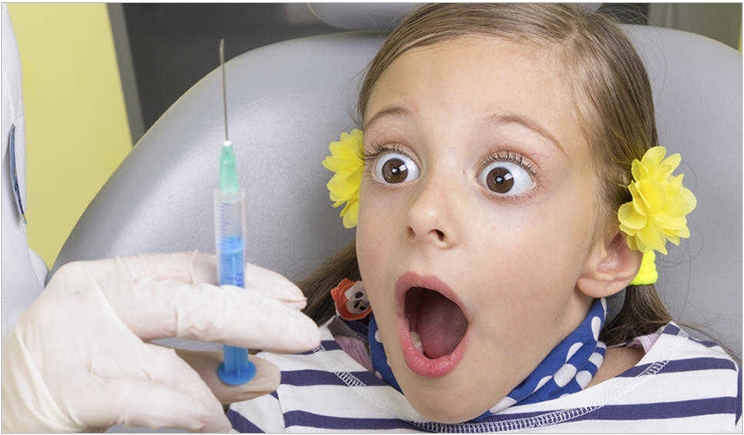
Many children are afraid of going to the dentist—particularly because of the needles they inevitably encounter. In fact, 13.9% of the 10- to 16-year-olds recently surveyed by the Oral Health Centre of Expertise in Western Norway reported high levels of intraoral injection fear. This fear was so strong, 10.6% of the 1,441 subjects surveyed said they would avoid dental treatment.
Of course, a reluctance to visit the dentist could have grave consequences on oral health. The researchers concluded, then, that while dental anxiety is a cause for concern, treatment of intraoral injection fear should be addressed even before treatment of dental fear. Karin G. Berge of the Oral Health Center of Expertise in Western Norway and the University of Bergen shared her insights about the survey with Dentistry Today.
Q: What is the difference between intraoral injection fear and overall dental fear?
A: Intraoral injection fear falls into the subgroup of injection fear in the blood-injury-injection fear category. It is characterized by fear of the needle related to dental treatment, whereas the other aspects of dental treatment are not associated with fear. These patients would typically avoid intraoral injections, but go through with other dental treatment. Dental fear covers fear of all aspects of the dental treatment.
Q: Why did the study focus on children specifically?
A: Blood-injury-injection phobia is typically developed during childhood, with an onset prior to 10 years of age. This leads to a salient need for early intervention to enable children to receive intraoral injections and to prevent future problems of avoidance of dental treatment.
Q: You used the Intraoral Injection Fear scale and other questionnaires. Could you briefly describe them, and the kinds of questions they asked?
Four different psychometric instruments/scales were used:
- The Intraoral Injection Fear scale is a 12-item scale validated for children and adolescents assessing different aspects (mainly to dimensions, “contact fear” and “distal fear”) and different triggers of fear of intraoral injections. Each response was scored from one to 5, (one = “not afraid at all,” 5 = “very afraid”).
- The Children’s Fear Survey Schedule-Dental Subscale consists of 15 items measuring dental fear in children and adolescents. The 5 response options are graded from one (not afraid at all) to 5 (very afraid).
- The Injection Phobia Scale for children is an 18-item scale assessing fear of injections, mainly extra-oral injections such as blood samples and vaccines. The 5 response options are graded from zero (not afraid at all) to 4 (very afraid).
- The Mutilation Questionnaire for children is a 15-item questionnaire assessing fear of blood and injury. The questionnaire consists of 15 items, each ranging from zero to 4 (0 = not afraid at all, 4 = very afraid).
Q: The study noted that 13.9% of the children surveyed reported intraoral injection fear. How does this compare to rates among adults? If there is a difference, what is causing it?
A: The rate is similar, or a bit higher than the rates reported for adults. Some of the difference may be due to cognitive development and maturation in children.
Q: Did children who already have had injections report less fear, more, or about the same? If there is a difference, what is causing it?
A: Children with no previous experiences of intraoral injections reported actually higher levels of intraoral injection fear compared to those who had previously received injections at the dentist. This may reflect that the first group probably also included “avoiders,” those who avoid intraoral injections due to fear. Additionally, the younger children probably have not had as much caries experience and dental treatment needs as adults.
Q: The study noted that 10.6% of children would avoid treatment. How would children avoid treatment? Wouldn’t parents make them see the dentist?
A: Based on self-reports, 10.6% of the children would avoid dental treatment if an intraoral injection was needed. The avoidance variable was targeting the treatment situation involving the intraoral injection rather than targeting attendance to the dental appointment. The youngest children are often accompanied by their parents or guardians attending the dental appointment and are therefore more in the position to avoid the actual treatment setting rather than the dental appointment. However, self-reports on avoidance behavior in children should be interpreted with caution.
Q: How can this fear of injections impact oral health?
A: High fear or phobia of intraoral injections is associated with avoidance. Patients avoiding intraoral injections are more likely to either avoid further necessary dental treatment or experience painful dental procedures. Painful dental experiences are known to be predicate upon development of dental fear and anxiety, associated with reduced dental health.
Q: What strategies could dentists use to help their patients overcome these fears?
A: Cognitive behavioral therapy is an evidence-based and recommended treatment method for treating specific fears and phobia in children and adolescents. The main principles are gradual and controlled exposure to a hierarchy of anxiety provoking steps connected to intraoral injections. The patients’ catastrophic thoughts and anxiety symptoms are elicited during the exposure and furthermore cognitive restructuring is an essential part of the treatment.
The study, “High Fear of Intraoral Injections: Prevalence and Relationship to Dental Fear and Dental Avoidance Among 10- to 16-Yr-Old Children,” was published by the European Journal of Oral Sciences.
Related Articles
It’s Not Just Patients Who Hate the Needle
Behavioral Therapy Can Treat Dental Anxiety
Try Magic and Comedy to Engage Patients and Ease Dental Anxiety










